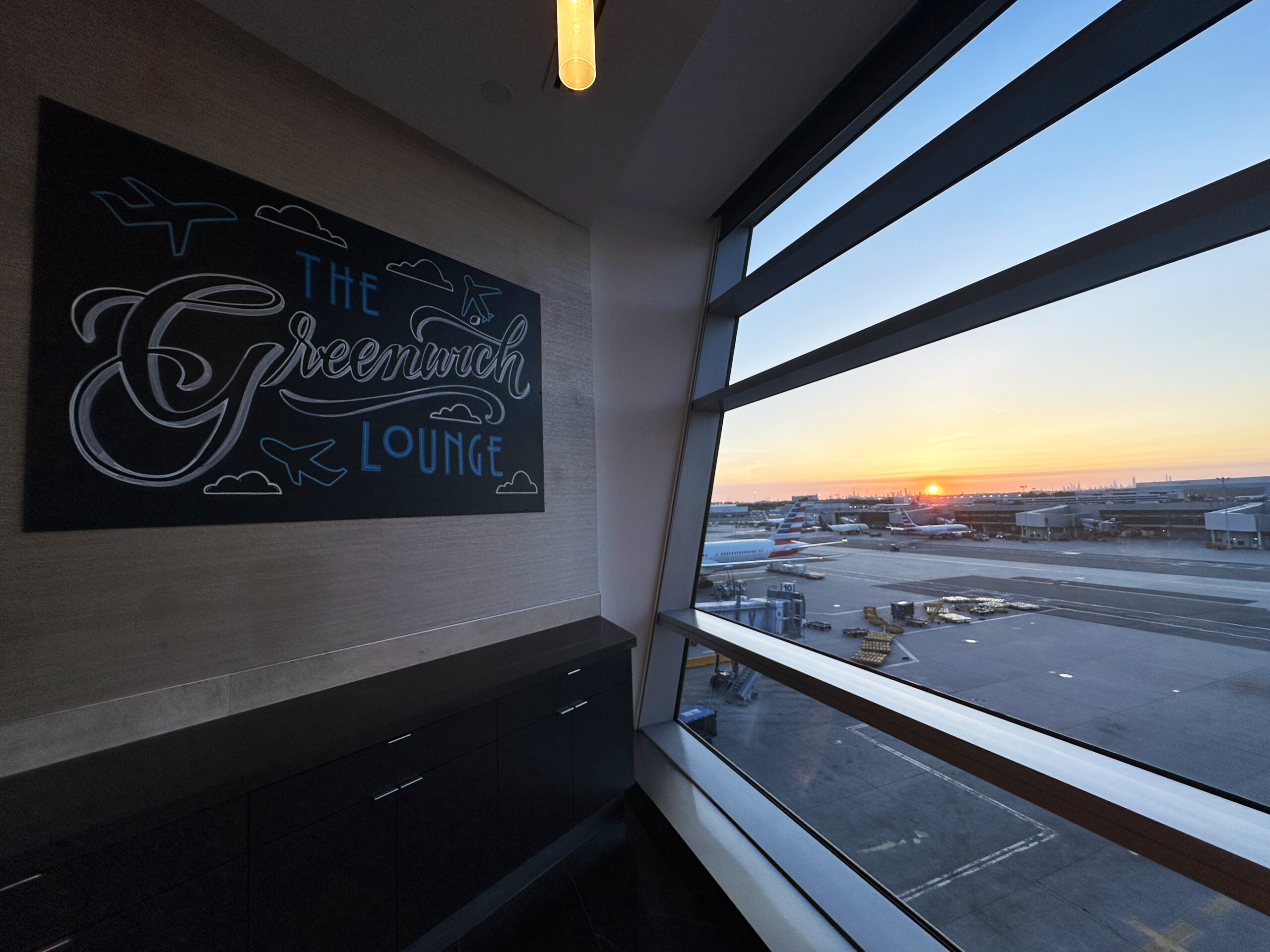What Is It Like to Fly American Airlines Domestic First Class
After a last-minute flight cancellation, I flew American Airlines First Class from Curaçao to Miami. Here’s what the experience was like — from booking to landing.
by George Gomez
April 28, 2025

Photo: American Airlines, Boeing 737-800. Courtesy of Brandon Karaca / Unsplash
What was supposed to be a straightforward journey to New York quickly turned into a logistical puzzle when my country’s flag carrier abruptly canceled my flight from Bogotá. Stranded in El Dorado, I had to improvise — fast. Through a patchwork of schedules and sheer luck, I found a creative solution: a short flight north to the Caribbean island of Curaçao, and from there, an American Airlines hop to Miami (MIA) before finally reaching New York (JFK).
Best of all, I managed to secure First Class seats all the way to JFK for just 25,000 AAdvantage miles — an extraordinary find, especially since last-minute economy fares were nearing $800 and First Class tickets were around $2,000. Considering my nonstop flight from Bogotá transformed into a three-stop journey to New York, the comfort of flying First Class was greatly appreciated.
Check-In
Upon arrival in Curaçao, the process of transferring was refreshingly informal. Without any checked baggage, I was able to bypass the main check-in counters entirely. Instead, a small gate tucked beside immigration opened discreetly for connecting passengers. A quick climb up an unassuming staircase brought me directly into the departure gates.
With a bit of breathing room before boarding, I detoured into the airport’s lone VIP lounge, accessible with my Priority Pass membership. During peak hours, when U.S.-bound flights and transatlantic departures clog the terminal, this lounge often feels like a lost cause. But at quieter times, it offers a modest but appreciated respite — a small corner of calm away from the terminal’s clamor.
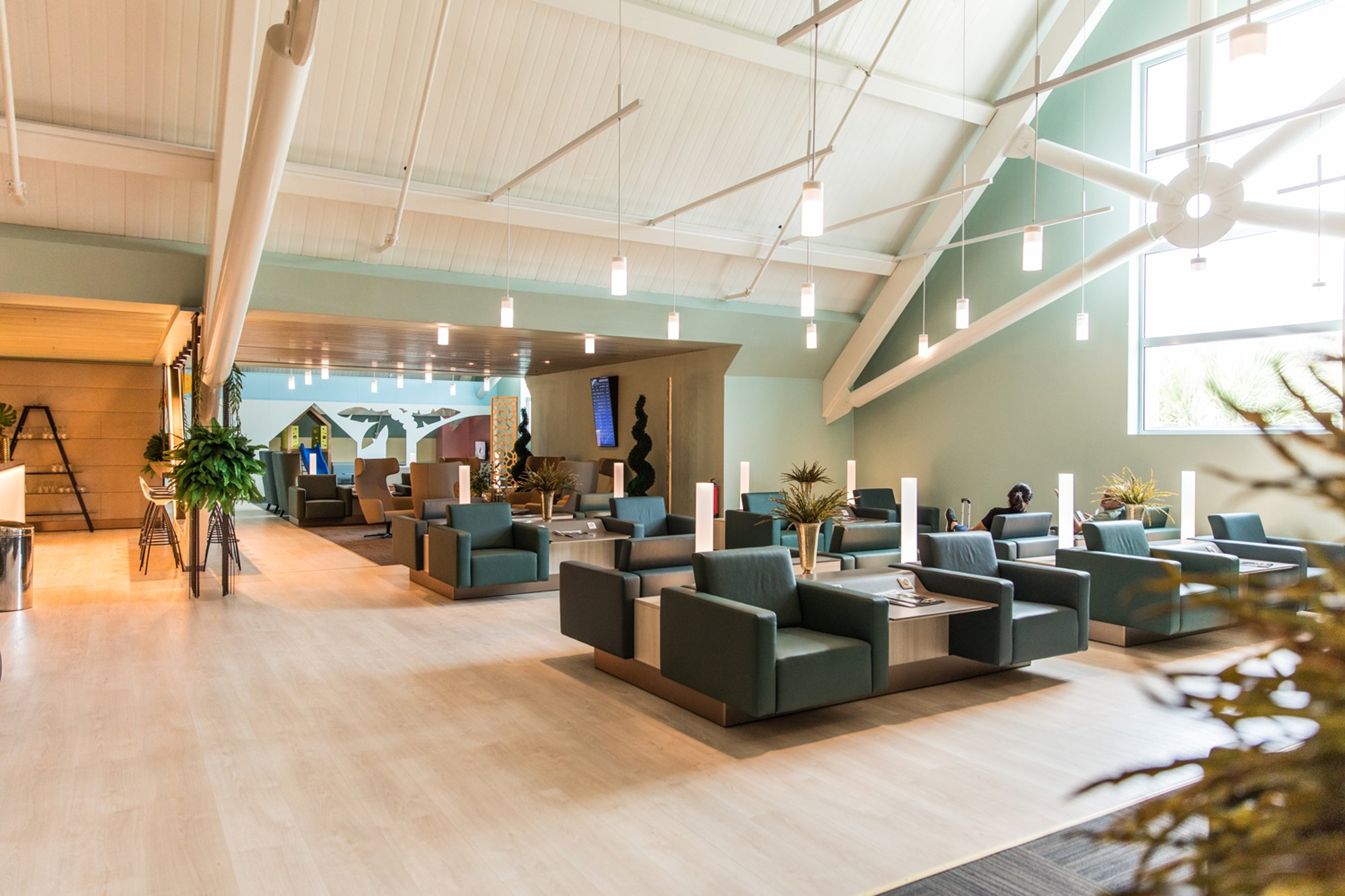
Photo: Courtesy of Priority Pass
The lounge offers a limited range of complimentary snacks and a full-to-order menu via a QR code. Given that I only had 20 minutes to spare, I didn’t take advantage of either, looking forward to AA’s in-flight service in First Class
Boarding
Curaçao International Airport operates just six gates equipped with jetways, and four more with remote stand access. Our departure was delayed about 20 minutes as the inbound aircraft needed more time at the gate — an unsettling prospect given my already tight connection in Miami.
Eventually, boarding was called. I walked down the jetbridge to board a 16-year-old Boeing 737-800. Despite the aircraft’s age, the cabin bore the signs of a recent refresh, clean and modern enough to disguise the years of service it had seen.
The Cabin
American Airlines provides a consistent First Class experience across its narrow-body fleet. Whether you board an Airbus A321, a Boeing 737 MAX 8, or, as in my case, a Boeing 737-800, you can expect the same onboard hard product.
The First Class cabin features slimline seats produced by Collins Aerospace. Often referred to as the Collins MIQ seat, the cabin is arranged in a 2-2 layout with 16 seats in the front section. Each seat has a pitch of 37 inches, a width of 20 inches, and a recline of 5 inches, making them suitable for domestic and short-haul international flights.
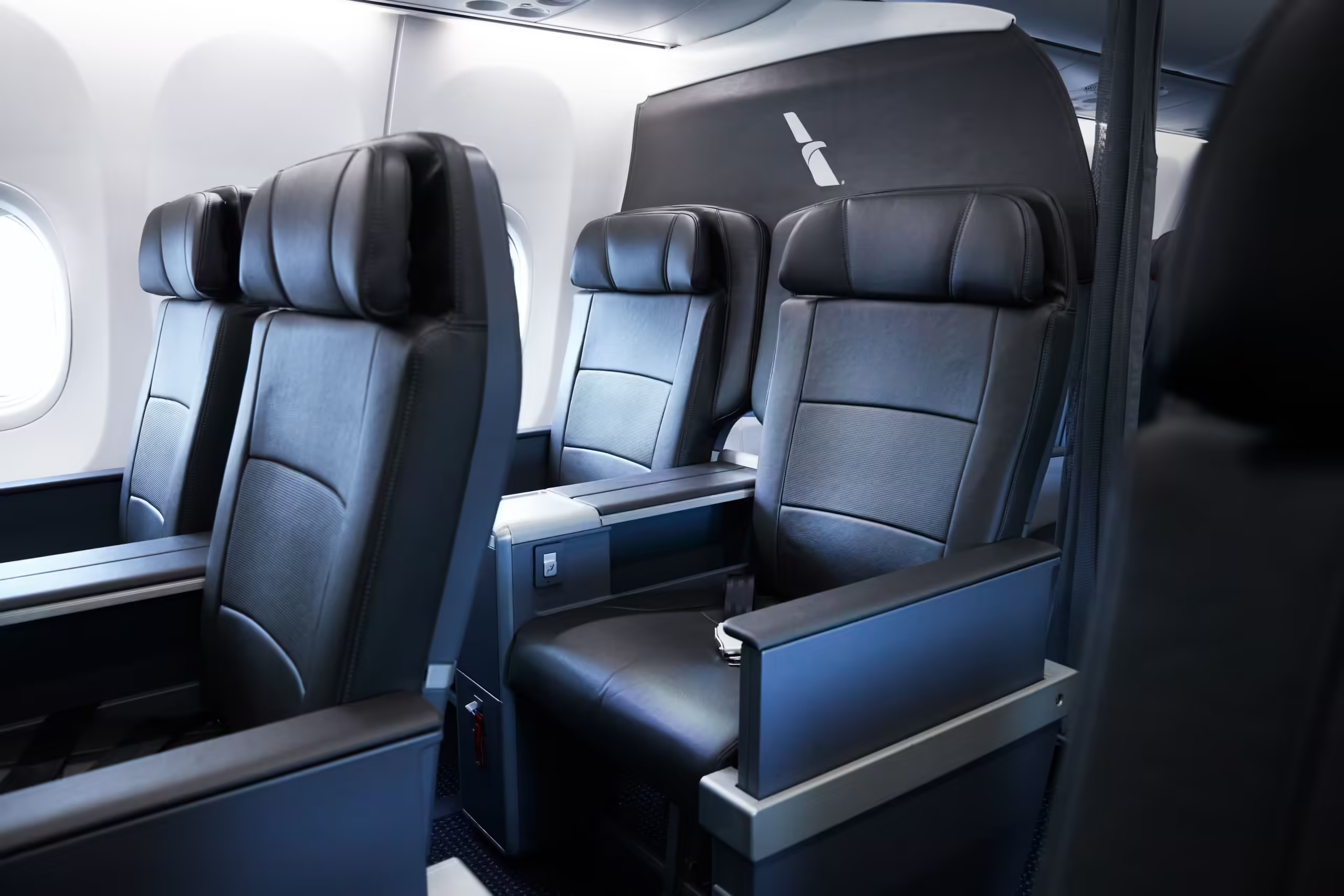
Photo: Domestic First Class, Boeing 737. Courtesy of American Airlines
I was automatically assigned seat 4E due to my last-minute booking.
While the seat initially appeared sharp, its shortcomings became apparent once we were airborne. The cushioning was thin, providing minimal support during longer flights. The recline was limited—more symbolic than practical—although the adjustable headrest did offer some assistance for those trying to get comfortable.

Photo: Courtesy of George Gomez
In comparison to the seats offered by competing airlines such as Delta and United, these seats are arguably the least comfortable and spacious.
Additionally, Americans’ move away from seatback entertainment screens on these planes is a constant pet peeve. Instead, passengers are encouraged to stream content to their own devices via onboard Wi-Fi. While the streaming platform typically works well, I chose to focus on work rather than movies during this flight.
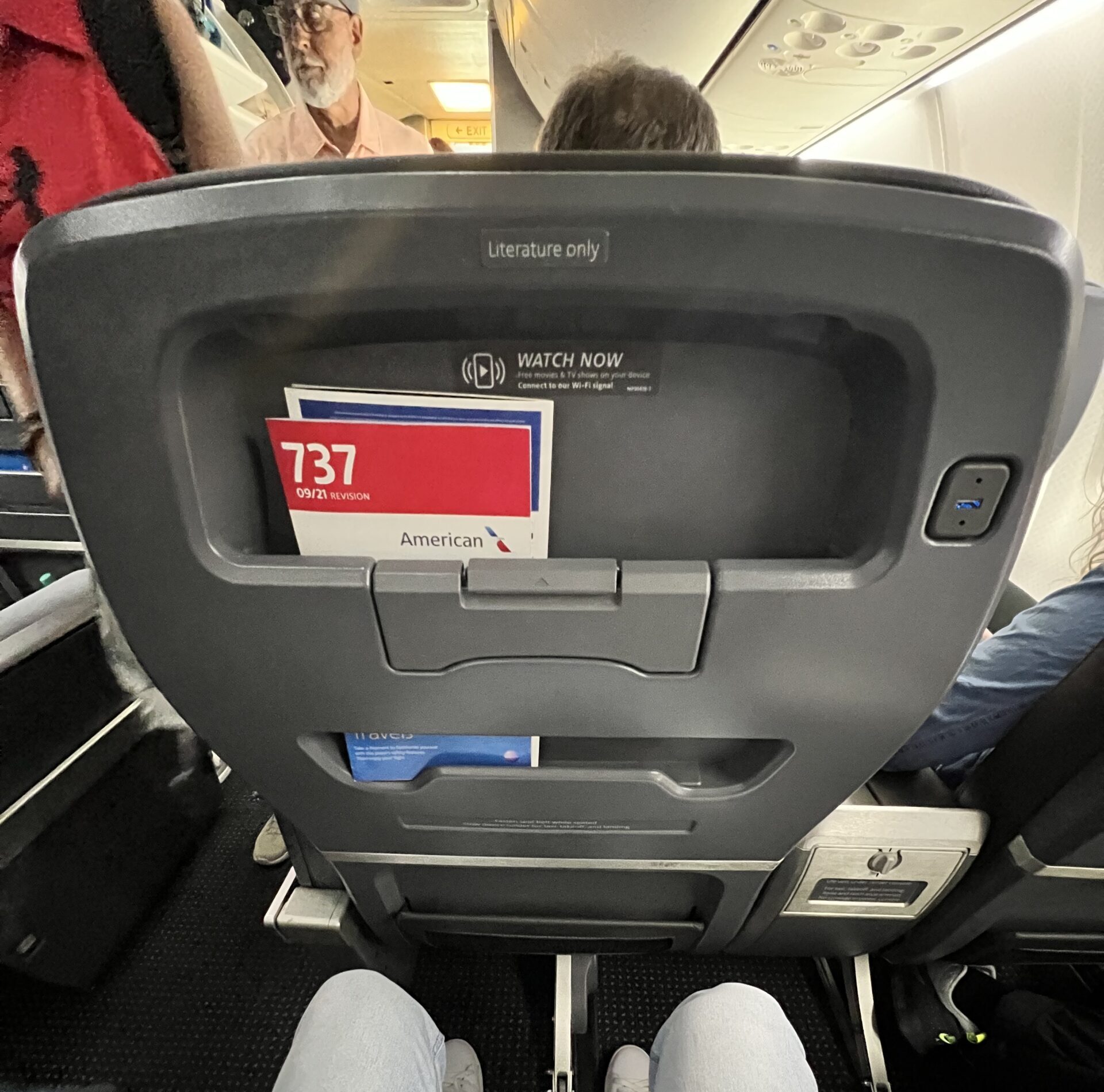
Photo: Courtesy of George Gomez
Strangely, there were no AC power outlets available—only a USB port built into the seatback. While it was adequate for charging a phone, it was frustrating for anyone needing to power a laptop.
On a positive note, the tray table, which slid out smoothly from the armrest, was large and sturdy enough to work comfortably. The dual-purpose armrest, which cleverly included a small drink tray, was another thoughtful feature.
Eager to make productive use of the time, I purchased a Wi-Fi pass. While offering free Wi-Fi for First Class passengers would have been a nice touch, American has since promised complimentary internet for AAdvantage members soon. On this flight, the connection was stable, allowing me to clear a chunk of work before arrival.
Food and Beverage
Roughly 40 minutes after wheels-up, service began with the distribution of warm towels — a small but welcome luxury.
Shortly after, a flight attendant offered a glass of red wine accompanied by warm nuts, a nostalgic nod to the days when flying First Class felt a little more glamorous.
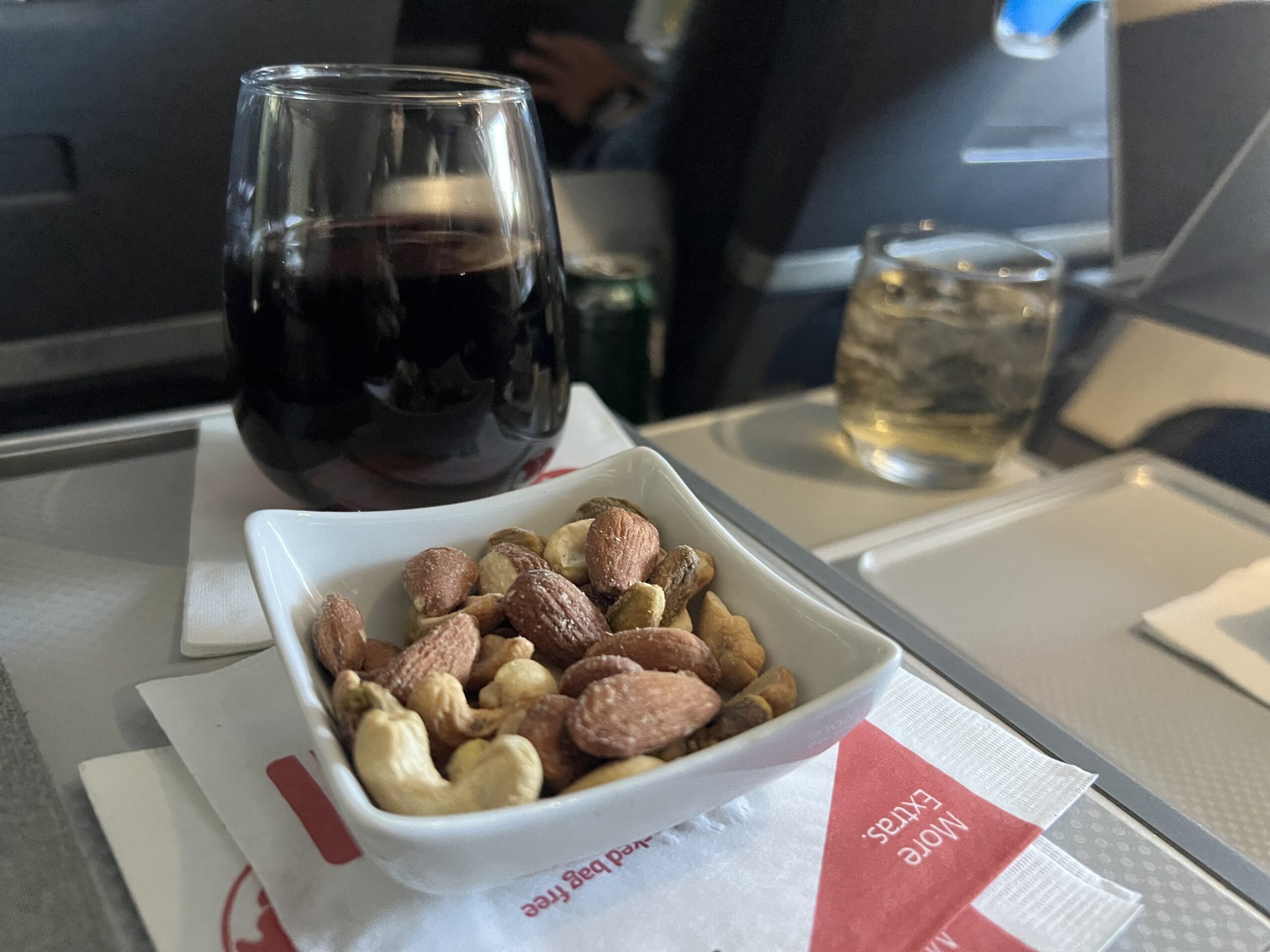
Photo: Courtesy of George Gomez
When the main meal arrived, it exceeded my expectations. I had pre-ordered a salad, and it was delivered beautifully plated and exceptionally fresh — a crisp bed of greens complemented by colorful toppings and a flavorful dressing. Curiously, it came paired with a second salad — a vibrant squash side dish that proved just as delightful.
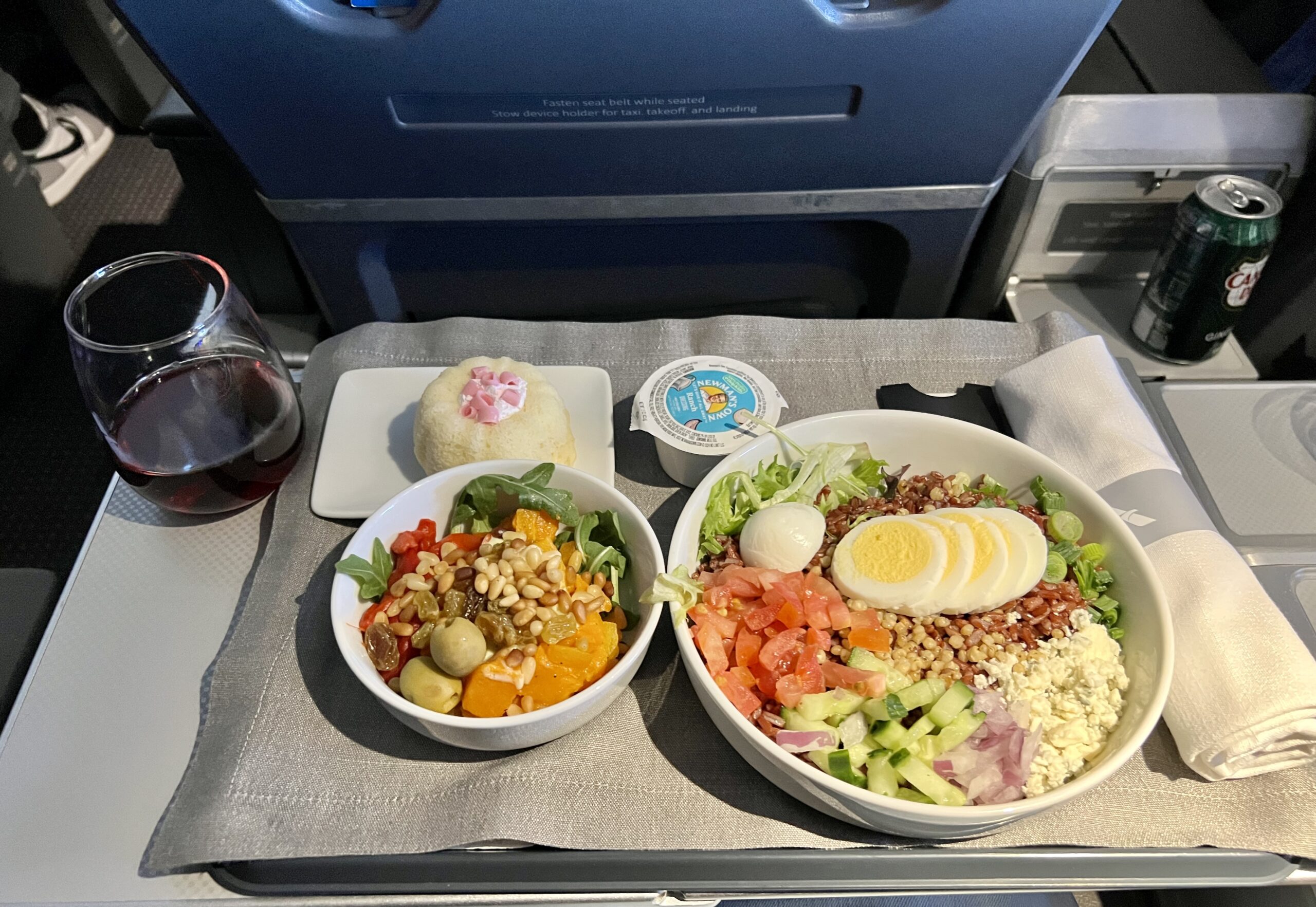
Photo: Courtesy of George Gomez
A small, fluffy cake served as dessert. Though I didn’t sample it myself, it looked light and well-presented. Meanwhile, my seatmate opted for the short rib, which appeared hearty and well-executed.
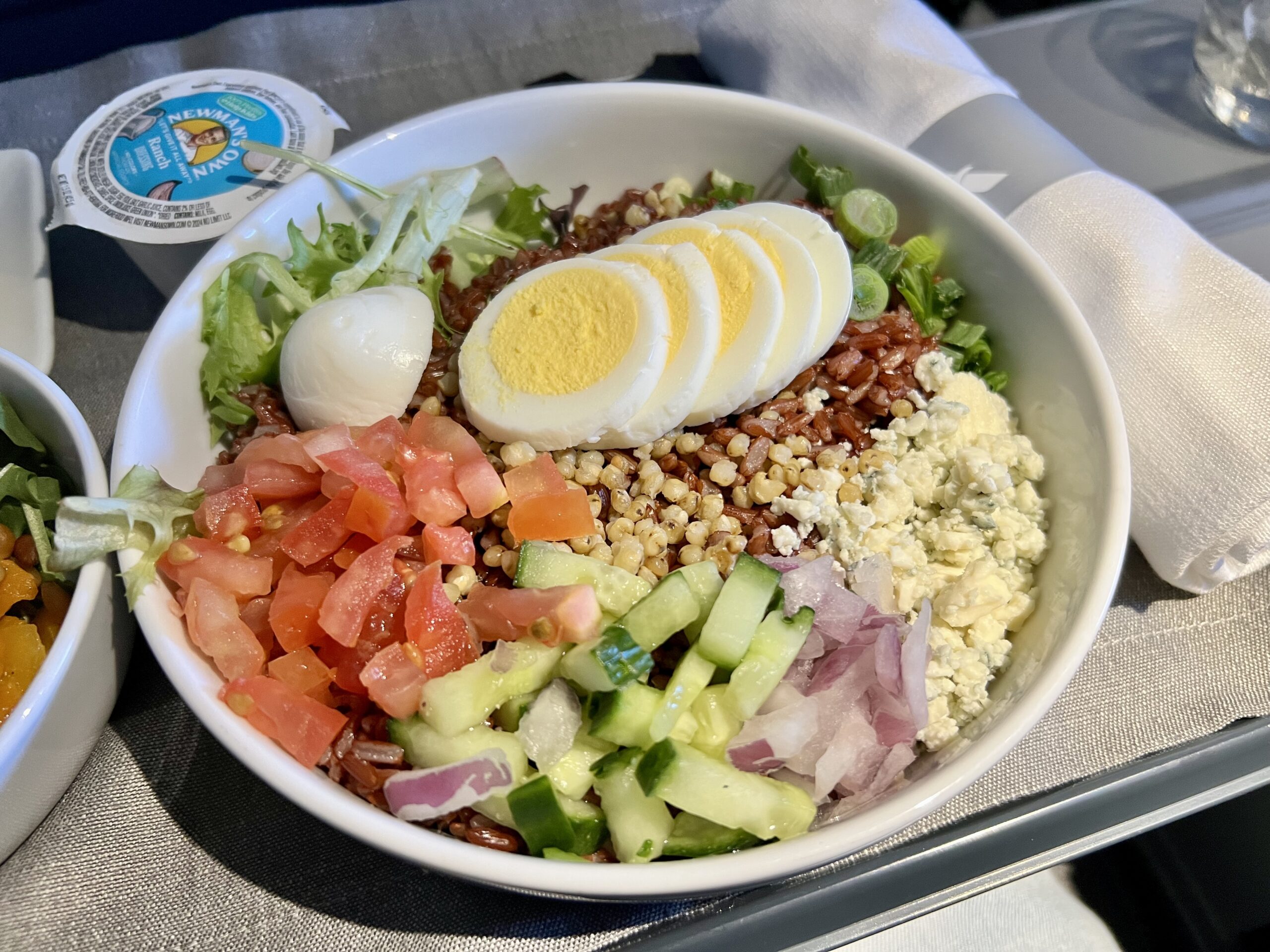
Photo: Courtesy of George Gomez
The service, however, left something to be desired. The flight attendants operated with mechanical efficiency, completing their duties without much warmth or engagement. The human element — the one that often elevates a premium cabin experience — was notably absent.
Arrival
Our flight pushed back from the gate 45 minutes late, delayed by an issue with refueling. The pilots, visibly stressed, stepped in and out of the flight deck in an attempt to expedite the process. Once airborne, they made up some time, shaving precious minutes off what would otherwise have been a 3-hour-and-5-minute flight.
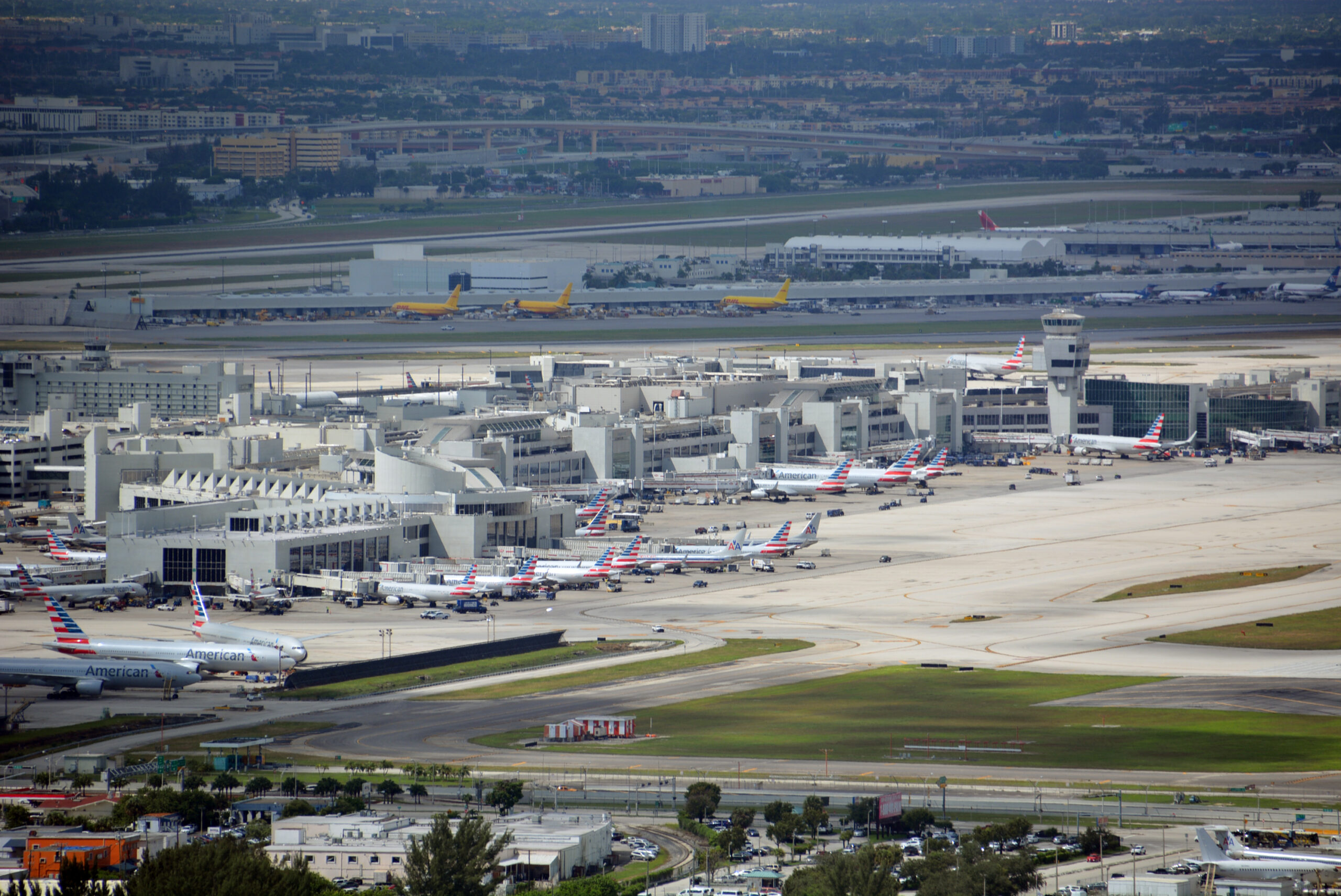
Photo: Courtesy of Miami International Airport
Unfortunately, any time gained in the air was quickly lost on the ground. We parked at the very first gate of Concourse D — a long, weary 20-minute walk to the immigration hall. At Miami International, known for its endless lines, every minute counts, and the long trek only compounded the anxiety of a tight connection.
Verdict
American’s Boeing 737-800 First Class provides an experience that sits firmly between “good enough” and “could be better.” The wide seats and spacious legroom make for a comfortable physical space, but the thin cushioning, lack of in-seat power, and transactional service dilute the premium promise.
Still, considering I redeemed only 25,000 miles for this itinerary, compared to sky-high cash fares, it was undeniably an excellent value.
The highlight of the flight was, surprisingly, the meal: fresh, thoughtfully prepared, and better than many I’ve had, even on longer routes.
American Airlines delivers a consistent, predictable First Class experience across its narrow-body fleet. It’s practical and efficient — just don’t expect much beyond the basics. For a short-haul flight stitched together under stressful circumstances, it got me where I needed to go, with a touch more comfort and a bit more dignity than the alternatives would have offered.



